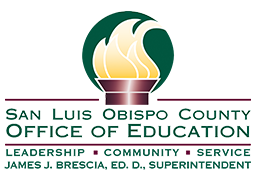Our Students, Our Schools, Our Communities
 Community Engagement is a key component of the Local Control Accountability Plan (LCAP) priority 3. According to the California Department of Education (CDE), family and community engagement greatly increases the likelihood that students will learn and thrive. Students are more prepared for school, more likely to achieve, and more likely to graduate when they are supported by schools, families, and communities working together in a coordinated manner (CDE, 2018). But more than LCAP compliance is that
Community Engagement is a key component of the Local Control Accountability Plan (LCAP) priority 3. According to the California Department of Education (CDE), family and community engagement greatly increases the likelihood that students will learn and thrive. Students are more prepared for school, more likely to achieve, and more likely to graduate when they are supported by schools, families, and communities working together in a coordinated manner (CDE, 2018). But more than LCAP compliance is that
“The whole child needs the whole school, the whole family, and the whole community working in collaboration” (Moles & Fege, 2011)
 Communities expect and need high-quality schools; parents want their children to succeed, and the broader community needs strong schools to ensure the long-term viability of the local economy. Failure to effectively and meaningfully engage these key stakeholders represents a missed opportunity to leverage powerful resources (Rhim, 2011). A few examples of purposeful engagement opportunities can be including community members to serve on volunteer associations, school councils, and school boards, as well as shorter-term efforts (Brown et al., 2011). Other recommended research-based strategies for districts can be found in the Handbook for Family and Community Engagement posted on the CDE website (pg. 171-174). Some examples include:
Communities expect and need high-quality schools; parents want their children to succeed, and the broader community needs strong schools to ensure the long-term viability of the local economy. Failure to effectively and meaningfully engage these key stakeholders represents a missed opportunity to leverage powerful resources (Rhim, 2011). A few examples of purposeful engagement opportunities can be including community members to serve on volunteer associations, school councils, and school boards, as well as shorter-term efforts (Brown et al., 2011). Other recommended research-based strategies for districts can be found in the Handbook for Family and Community Engagement posted on the CDE website (pg. 171-174). Some examples include:
- Appoint a leader to coordinate home and community efforts throughout the local agency.
- Conduct workshops for educators on improving academically stimulating activities in the home and community.
- Enlist the cooperation of community centers, houses of worship, and non-profit clubs to offer parenting courses helping families raise their expectations and becoming more communicative and supportive in their interactions with their children.
- Work with community agencies to provide and align services for families around homework.
- Collaborate with community organizing groups to recruit parent leaders from diverse social, economic, and cultural backgrounds.
- Build linkages with other early childhood and family service providers in the community.
- Help schools evaluate their family and community engagement program activities.

Schools will be more effective at engaging families and communities when they move toward systemic, integrated, and sustained engagement (CDE, 2018). The Family and Community Engagement Handbook published by the School Community Network outlines three commonalities in the research as “action principles” for State Education Agencies, Local Education Agencies, and Schools:
- Increase community awareness about the value of and opportunities for community engagement with Local Education Agencies (LEAs);
- Articulate and evaluate expectations of community engagement;
- Build the capacity of schools to engage their communities.
Finally, below is a video published by SWIFT Schools Education Center, the key researchers and trainers of the nation-wide Systems of Support (MTSS) initiative on Trusting Community Relationships as a key component to systemic continuous improvement in schools.
Devon Hodgson, Ed.D.
Program Specialist
San Luis Obispo County Office of Education
dhodgson@slocoe.org
805.782.7276
Contact
- San Luis Obispo County Office of Education
- Office of James J. Brescia, Ed.D.
- 3350 Education Drive
- San Luis Obispo, CA 93405
- Tel: 805-543-7732
- Contact SLOCOE
- Contact Webmaster

